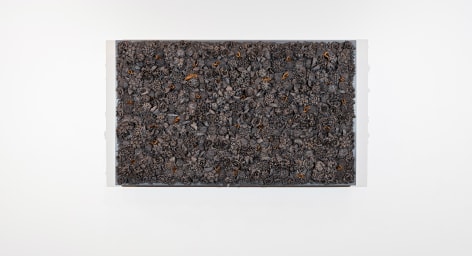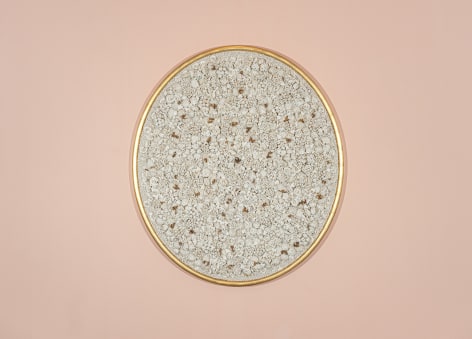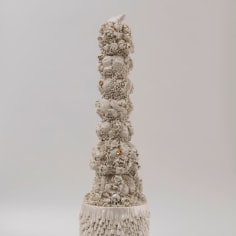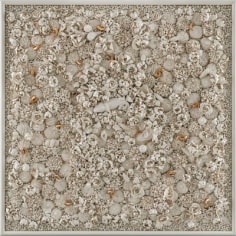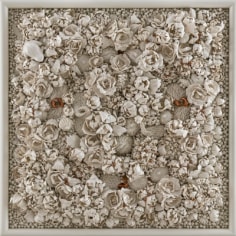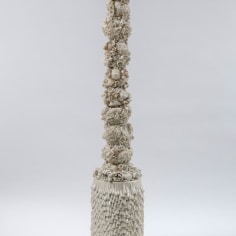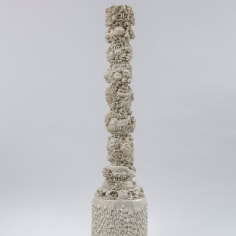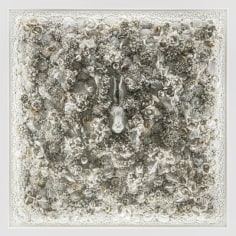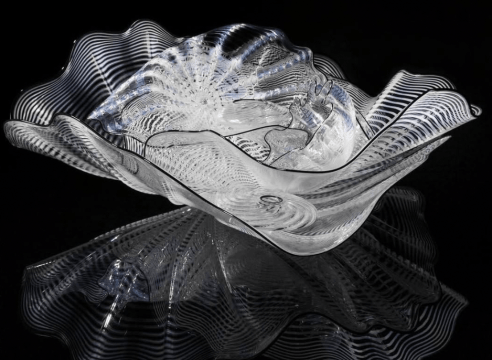
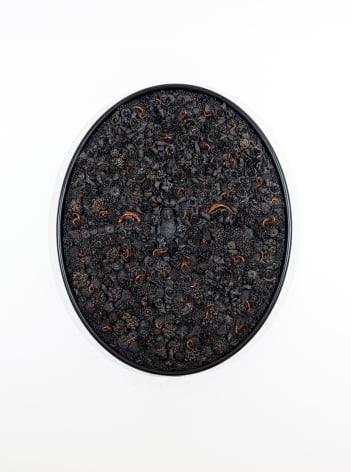
Melis Buyruk
The Parrot, 2025
Black Porcelain, Copper Decorated
147 x 117 cm
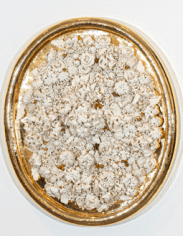
Melis Buyruk
The Blossom Within, 2025
Porcelain, Hand Hammered Brass
90 x 75 cm
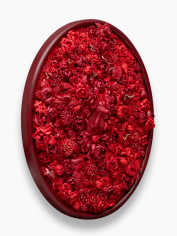
Melis Buyruk
The Rooster (Symbol of Lust), 2024
Porcelain
81 x 66 cm
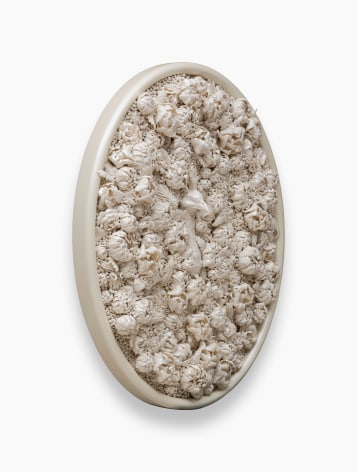
Melis Buyruk
The Peacock (Symbol of Pride
and Vanity), 2024
Porcelain
81 x 66 cm
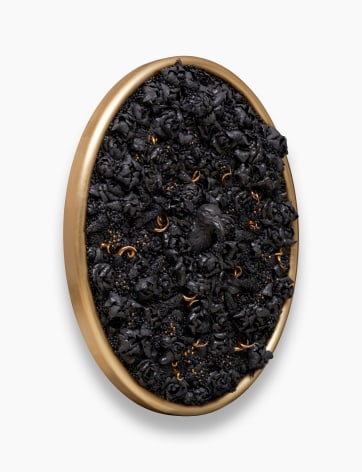
Melis Buyruk
The Crow (Symbol of Longing
for Immortality), 2024
Porcelain
81 x 66 cm
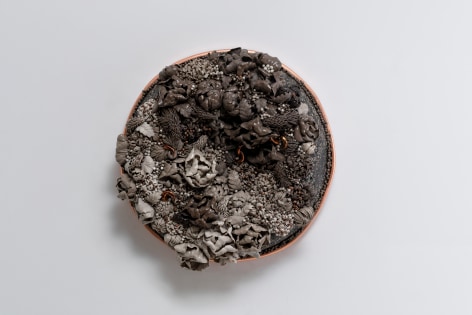
Melis Buyruk
Blooming Earth, 2024
Porcelain, Stoneware
44 x 18 cm
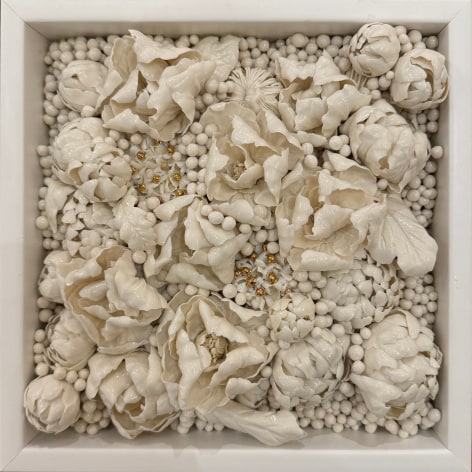
Melis Buyruk
Habit Series, 2024
Porcelain
12 x 12 x 3.75 in.
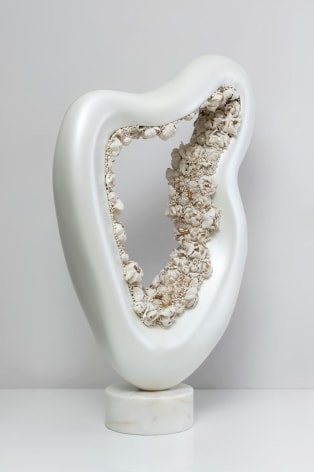
Melis Buyruk
Habitat, Loop, 2024
Porcelain, Fiberglass, Marble
125 x 70 x 15 cm
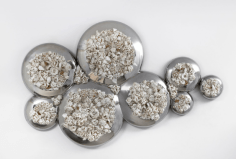
Melis Buyruk
The Blooming Nest, 2024
Stainless Steel, Porcelain, and 22k Gold Detail
160 x 120 cm x 10 cm
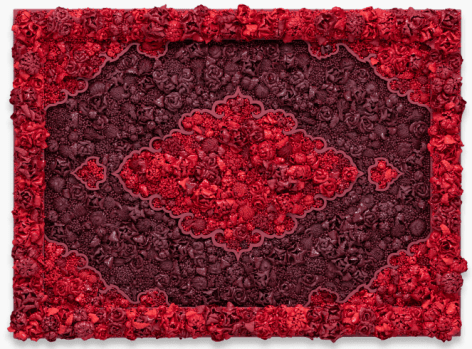
Melis Buyruk
Blooming Carpet, 2024
Porcelain(Hand Built), Wooden Panel
110 x 150 x 12 cm
Melis Buyruk
Habitat | Misty Sky, 2023
Porcelain, 22k Gold Detail
85 x 140 cm
Melis Buyruk
Reflected Bloom (6 piece diptych), 2023
Stainless Steel and Porcelain
213 x 181 cm
Melis Buyruk
Falcon’s Habitat, 2022
Porcelain, 18k Gold Detailed
175 x 155 cm
Melis Buyruk
Habitat Tower 3, 2021
Porcelain and 18k Gold
109 x 31 cm
Melis Buyruk
Habitat Bearded Dragon, 2021
Porcelain and 18k Gold
43 x 43 in. / 110 x 110 cm
Melis Buyruk
Habitat Habitat, 2021
Porcelain and 18k Gold
39.7 x 39.7 in. / 101 x 101 cm
Melis Buyruk
Habitat Frog, 2021
Porcelain and Copper
26 x 26 in. / 66 x 66 cm
Melis Buyruk
Habitat Tower 1, 2020
Porcelain, 18k Gold, Wood, and Epoxy Clay
55 x 10.6 in. / 140 x 27 cm
Melis Buyruk
Habitat Tower 2, 2020
Porcelain, 18k Gold, Wood, and Epoxy Clay
50 x 11 in. / 127 x 28 cm
Melis Buyruk
Habitat The Rabbit, 2019
Porcelain and 18k Gold
124 x 124 in. / 315 x 315 cm
Melis Buyruk (b. 1984, Gölcük, Turkiye) is a ceramic artist based in Istanbul and Dubai, whose work explores the possibilities of porcelain as a medium within contemporary art. Through her large-scale, nature-inspired sculptures, she brings together elements of the natural world to create imagined landscapes that highlight the beauty and intricacy of organic forms.
Melis studied ceramics at Selçuk University, where she gained a comprehensive understanding of traditional ceramic production techniques. Building on this foundation, she has developed a practice that combines technical expertise with a contemporary artistic vision, transforming porcelain into a medium for exploring form, texture, and scale.
Her works have been exhibited internationally, including at the Taiwan Ceramic Biennale, as well as in prominent venues across Turkey, the United States, and the United Arab Emirates. In addition, her sculptures are part of several signifi cant collections, including the Louvre Abu Dhabi Museum, demonstrating their resonance within both regional and global contexts.
Melis Buyruk’s practice reflects a deep engagement with the materiality of porcelain, offering new perspectives on the relationship between craft, art, and the natural world. Her work serves as a thoughtful dialogue between tradition and innovation, contributing to the evolving discourse in contemporary ceramics.
